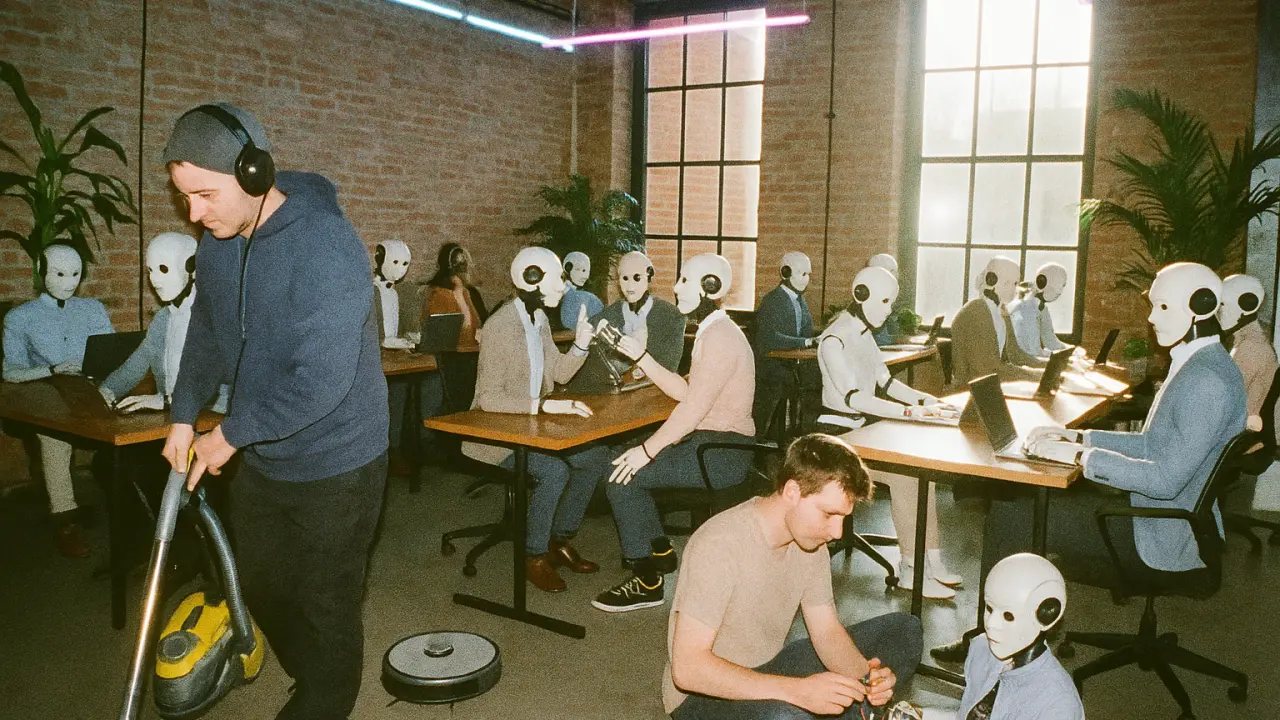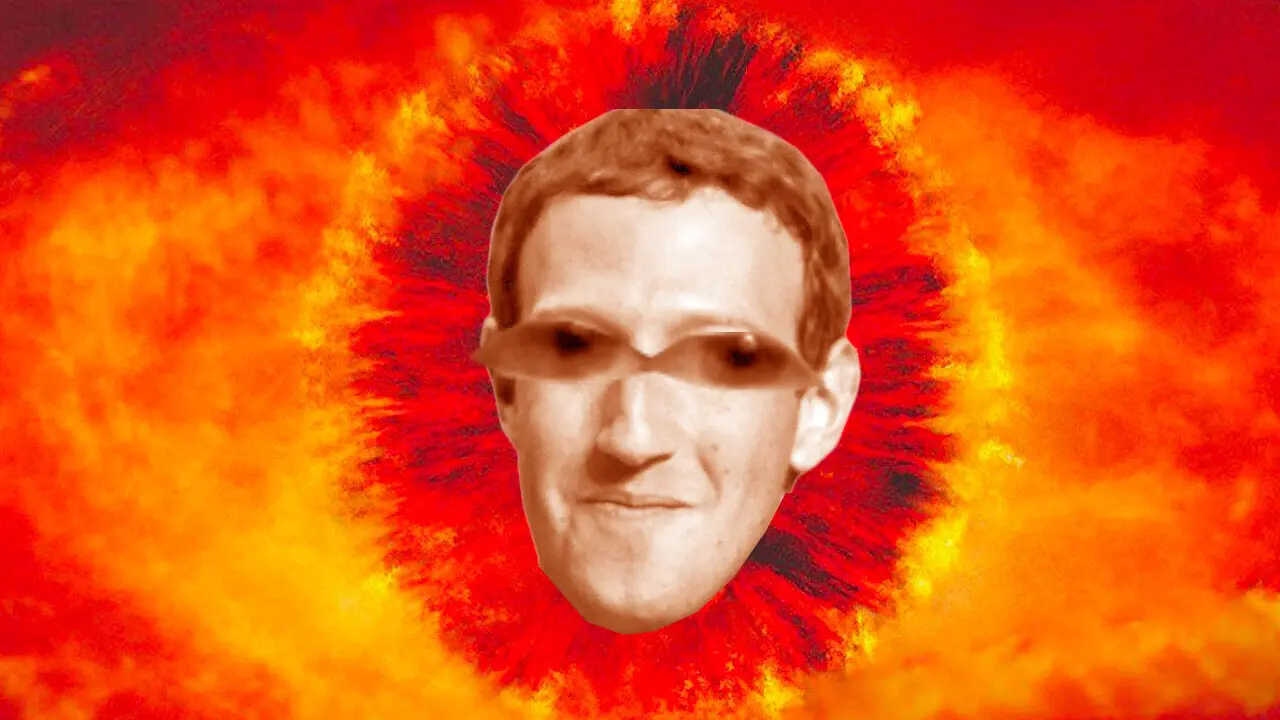
The Great AI Vampire Squid: How Tech Giants Are Bleeding Workers To Feed Their Unprofitable Habit
Amazon, Microsoft, and Meta fired 180,000 people to 'fund AI' but are now spending $300B+ buying each other's infrastructure in a circular economy with no profits in sight.
The math isn’t complicated, but the implications are staggering. Amazon cuts 30,000 people, the largest layoff in company history. Microsoft eliminates 15,000 positions. Meta, Google, Intel, Salesforce, the bloodletting continues with over 180,000 tech workers losing their jobs this year alone.
The stated reason? “We need to fund our AI initiatives.” The reality? A circular spending frenzy where these companies are essentially writing billion-dollar checks to each other while actual AI profits remain theoretical.
The Layoff Industrial Complex
The year 2025 has become the year of the “AI restructuring”, with every major tech company using identical talking points. Amazon CEO Andy Jassy told staff ↗ the company “will need fewer people doing some of the jobs that are being done today.” Zuckerberg claimed AI could soon “effectively be a sort of mid-level engineer capable of writing code.” Salesforce laid off 4,000 customer support staff explicitly blaming “increasing AI adoption.”

But here’s where the narrative falls apart: these companies aren’t actually banking the savings from workforce reductions. They’re spending orders of magnitude more than they’re saving, estimates suggest they’ll collectively deploy over $300 billion on AI infrastructure this year ↗ alone.
Amazon, despite cutting 30,000 jobs, maintained $35 billion in first-half profits ↗ while planning to invest $120 billion in AI. That’s not cost-cutting, it’s cost-shifting from human capital to computational capital.
The Circular Economy of AI Infrastructure
The real story gets even stranger when you follow the money. It largely moves in circles:
- Microsoft buys Nvidia chips, rents capacity from Amazon AWS, and licenses software from competitors
- Amazon buys Nvidia chips, uses Microsoft software, and rents infrastructure from Google Cloud
- Meta buys Nvidia chips while renting from both Google Cloud and AWS
- Apple rents everything from Google, AWS, and Azure
- Everyone pays Nvidia, who pays TSMC for manufacturing
It’s a closed-loop system where the “Magnificent 7” companies, Apple, Microsoft, Nvidia, Amazon, Alphabet, Meta, and Tesla, have become each other’s best customers. Their combined market cap of $17 trillion represents nearly 57% of US GDP, yet they generate only $2.2 trillion in revenue with $550 billion in net profit.
The premium valuation? A staggering average P/E ratio of 35 compared to the S&P 500’s 15.5, investors are essentially paying $35 for every $1 of current profit based on the promise AI will eventually pay off.
The Arms Race Nobody Can Afford to Lose
The reality is these companies are trapped in a spending vortex. Microsoft, Amazon, Alphabet, and Meta increased capital expenditures by 42% in 2024 ↗ and plan another 17% increase in 2025, totaling $244 billion across just these four giants.

Google now expects to spend between $91-93 billion on capital expenditures this year, up from previous guidance of $75 billion. Meta increased its 2025 capex guidance to $70-72 billion. Microsoft spent $34.9 billion in a single quarter, a 74% jump year-over-year.
The trap is simple: if any company slows spending, investors panic about “falling behind” in the AI race. Their stock would crater. So they’re locked in what one analyst called “trading talent for GPUs”, sacrificing human capital for computational capacity with no clear path to ROI.
Where’s the ROI? Spoiler: It’s Mostly Missing
For all the spending, concrete returns remain elusive. Microsoft took a $3.1 billion hit ↗ from its OpenAI investment this quarter. Most companies can’t point to meaningful AI revenue streams beyond cloud infrastructure usage, which is essentially them paying themselves.
J.P. Morgan Asset Management notes ↗ that “AI-related capital expenditures contributed 1.1 percent to G.D.P. growth” in the first half of 2025. Without this spending, GDP growth would have been just 0.6%, meaning the entire US economy is being artificially propped up by what amounts to corporate vanity projects.
The circular nature becomes painfully obvious when you consider that Nvidia, the primary beneficiary, recently announced $500 billion in orders ↗ for AI chips, mostly from the same companies laying off tens of thousands.
Your 401(k) Is Betting This Works
The real stakes become clear when you follow the money trail to Main Street. The Magnificent 7 companies represent 37% of the S&P 500 and drove 54% of its gains in 2024. Most retirement accounts are heavily invested in index funds tracking this performance.

So when you hear “the stock market hit another record”, understand it’s largely because these seven companies are spending hundreds of billions buying infrastructure from each other at inflated valuations. Your retirement security depends on this circular spending eventually producing actual profits.
The Data Center Cliff
The infrastructure demands are becoming increasingly unsustainable. OpenAI recently announced ↗ plans to develop 30 gigawatts of computing resources worth $1.4 trillion. For context, the entire US electric grid has about 1,100 gigawatts of capacity.

As one analyst put it to Business Insider: “The problem is CoreWeave, Oracle, and those companies. If they get stuck with this capacity, they won’t have anything to do with it. They don’t have customers, they don’t have an internal use of this. That’s where the problems will be.”
The Human Cost and Strategic Question
Beyond the financial paradox lies a deeper strategic question: why eliminate 180,000 potential AI users when you could use them as force multipliers? The prevailing sentiment in development communities suggests this might be less about efficiency and more about post-pandemic workforce corrections masked as “AI transformation.”
The irony is thick, companies fire experienced engineers claiming AI can replace them, then spend billions buying infrastructure from each other to build AI that hasn’t proven it can reliably replace them. It’s the corporate equivalent of burning your furniture to heat your house while ordering expensive firewood from your neighbor.
The Unprofitable Future
We’re witnessing a high-stakes game of musical chairs where the music hasn’t stopped yet. Companies are spending because they must, workers are being cut because they can be, and investors are betting because they have to.
The real test will come when someone has to show real profits from these investments. Until then, we’re stuck in a bizarre ecosystem where tech giants fire employees to buy more GPUs from each other, pretending this circular spending represents innovation rather than what it might actually be: the largest wealth transfer from labor to capital in modern history disguised as technological progress.

